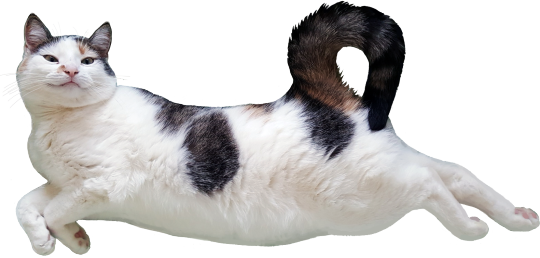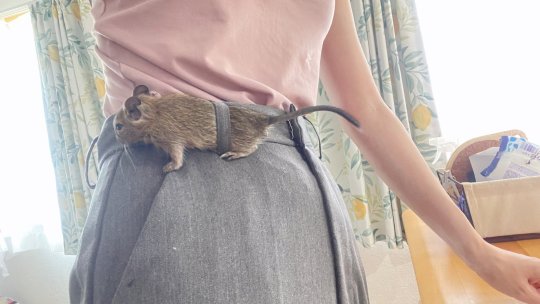Kit (they/them) | this may be a bird blog but I will reblog just about any animal. I have a soft spot for bugs and reptiles.
Don't wanna be here? Send us removal request.
Text
Great Backyard Bird Off - Cosmopolitan Birds (poll 5)


Support
Common Nightingale (Luscinia megarhynchos)
Continents: Africa, Asia, Europe
"I had a common nightingale residing in a tree right beside my window. He used to sing a lot and it brought me so much joy, but recently someone started to build on the lot the tree was on. They got rid of the tree and i lost my friend, i miss him :( This one is for him"
A plain brown bird with a pale eyering and rusty-brown tail, best known for its rich, powerful song which can keep people awake when given at night. Song is extremely variable, and can include whistles, trills, rattles, and warbled phrases; elements often repeated. Calls include a very difficult-to-locate “teek”, low rattles, and harsh rasping calls. Found in varied wooded and scrubby habitats, typically with shady understory. Winters in similarly varied tangled habitats. Typically rather shy and elusive. (eBird)
Rock Pigeon (Columba livia)
Continents: Africa, Asia, Europe, Oceania, North America, South America, feral populations also found in Europe, Africa, and Asia
"It’s iconically everywhere. (Someone should submit it.)"
Fairly large pigeon with wild and feral populations throughout the world. True wild birds nest on cliffs and in caves from western Europe to central Asia. Pale gray overall with two bold black wingbars and iridescent purple and green on neck. Feral varieties are common in cities and farmland, often in large flocks. Variable plumage: some identical to wild-type birds, but can be completely black, white, or orangey-brown and any combination in between.
Image Sources: nightingale (Santiago Caballero Carrera), pigeon (David Turgeon)
Continents which are underlined represent the non-native range of the species. Whether introduced on purpose on or accident, these species may have become invasive in this range. Despite their potential impact on native wildlife, please do not leave disparaging comments on these polls. Their purpose is to celebrate people's love of these species.
15 notes
·
View notes
Text
Welcome to the best feline tournament!!
This is inspired by @best-bird-tournament though it is much smaller in scope because I honestly don’t know how they have the patience. I am open to doing more mammals in the future but for now I’m doing cats.

This is the (very rough) map for the tournament. Each species will be eliminated until there is one to represent each genus, after which they will be paired together until we have the best felid! For the sake of my sanity I will not be including sub species so for example, Panthera Leo (lion) will be included but Panthera Leo Leo (northern lion) will not.
All photos will be taken from Wikipedia so if you think the photo chosen for your favourite cat isn’t cute enough take it up with them not me. Initial pairings are alphabetical by latin name.
Propaganda is welcomed! Either reblog with your thoughts or send it to me via ask to be added to the next poll.
12 notes
·
View notes
Text
Cooper's Hawk. I suspect it's the same one I've seen off and on for years. He or she has caught grasshoppers, doves and for a short time even rats in our backyard. As well as hunted mice and small birds. Once even ate the leftover cat food we leave out for the crows and other birds. Bathed in the drinking water we left out on a very hot day once. Harassed some magpies, only to get chased back by the magpies after they became fed up with it.
Makes quite a stir with the other birds, but I don't mind and is always a welcome visitor.
64 notes
·
View notes
Text

here's my cat for your dash btw. if you even care
88K notes
·
View notes
Text
Great Backyard Bird Off - Cosmopolitan Birds (poll 7)


Support
Eurasian Kestrel (Falco tinnunculus)
Continents: Africa, Asia, Europe
"It hovers in place in the air while hunting to see its prey better!"
"it's one of my favourites to see while driving home"
"it's called tower falco in my language and I have a picture from a newspaper where one brooded in a church tower and looks like he wasn't prepared for parenthood at all. It looks funny."
"windfucker"
Western Barn Owl (Tyto alba)
Continents: Africa, Asia, Europe
"Their name in Italian writes like "beard-Johnny""
"Aside from just generally being a cool bird, barn owls are one of the animals that consume most rodents (in regard to body weight) and are really important pest control because of this. We once had a juvenile barn owl peer in through our window and watch us for a few minutes."
Image Sources: kestrel (Alexis Lours), owl (Jon Lowes)
8 notes
·
View notes
Text
52K notes
·
View notes
Text




Goldfinch/steglits. Värmland, Sweden (July 17, 2021).
255 notes
·
View notes
Text
The demo is out! The dinos are loose! AHHHH!

You can play the Clever Girls Demo right now! Here: https://store.steampowered.com/app/3162300/Clever_Girls_Demo/
Details and release notes below the cut!
The demo is a short sampler of what the game will be like! It doesn't have everything the full game will have (it doesn't have the relationship system, for example!) but it has enough to see if you're interested! We've been working on this for what feels like a million, billion years! Here's the release notes on Steam: https://store.steampowered.com/news/app/2844340/view/524224889691832726?l=english
We're going to make a lot of updates! Things to fix, improvements, etc. will be ongoing, but it's very playable as-is! If you play the demo, we want to know what you think! Leave us a Steam review, use the in-game feedback form, use the tag when posting, send us messages on social media, whatever! We wanna see what people think!
79 notes
·
View notes
Text
Great Backyard Bird Off - Cosmopolitan Birds (poll 4)


Support
Canada Goose (Branta canadensis)
Continents: North America, Europe, New Zealand
I have a feeling this submission might be deleted because Canadian geese do live in the US, but they’re really a Canadian thing IMO (it’s in the name). Also, I grew up around them, and they’re really not as violent as you’d think: despite Canadian children making a game out of chasing them around, I’ve never met anybody who’s been bitten.
A large brown goose with a black neck and white chinstrap. Overall size, bill size, and brown coloration variable across subspecies. Occurs in any open or wetland habitat, from city parks and golf courses to pristine marshes and Arctic tundra. Typically in flocks or family groups. Often seen in mixed flocks with Cackling Goose, especially in central and western North America. Abundant and widespread throughout the U.S. and Canada; rare in Mexico. Introduced and widely established in Europe. Listen for loud honking calls, especially as flocks migrate overhead in the classic V formation. (eBird)
Common Swift (Apus apus)
Continents: Africa, Asia, Europe
"Swallows are really neat but swifts are so cool and fast and brilliant. Their colour is beautiful. They are not passeriformes [songbirds], which is also cool, and their feet are SO WEIRD"
"I love swifts, we got them in the street I grew up in every summer. The swifts' arrival means the beginning of summer to me, and when they leave, almost mysteriously, it's the end. We had a nest in the eaves just above our bathroom window, and swifts would return to it every year. I can't go back to where I grew up easily any more, and the sound and sight of swifts overhead always feels like the glimpse of a hug from home. One of my favourite things in the world is a sky full of gathering grey clouds and screaming, wheeling swifts ahead of a breaking summer storm. Submitting from the UK."
"they're sooo fast. so fast. and i love their little cacophonies"
"They don’t exactly live in your back garden but they’re a bird you often see zipping along through the air. In the Netherlands, seeing the first ones of the year really reminds you that spring and summer are coming. There’s a saying that when you see this birds flying low, it’s going to start raining hard very soon and they’ve never let me down. Also, these birds are hardcore. Unless they’re chicks or taking care of their own young, they’re flying around 99% of the time. They sleep in the air, they have sex in the air, they spend the first 3 years of their life never landing— until the time comes to raise their young. Isn’t that cool!!!"
Image Sources: goose (Andy Wilson), swift (Anonymous)
Continents which are underlined represent the non-native range of the species. Whether introduced on purpose on or accident, these species may have become invasive in this range. Despite their potential impact on native wildlife, please do not leave disparaging comments on these polls. Their purpose is to celebrate people's love of these species.
#STRONG CASE FOR GEESE RIGHT THERE#i miss their little butts!!!#theyre all teens now#soon to be adults#poll support#goose support
15 notes
·
View notes
Text

Crested Satinbird (Cnemophilus macgregorii), males, family Cnemophilidae, order Passeriformes, found in the mountains of Papua New Guinea
Originally thought to be in the Bird-of-paradise family, the 4 species of Satinbird are now in their own family.
photograph by Dustin Chen
602 notes
·
View notes
Text
Great Backyard Bird Off - Cosmopolitan Birds (poll 6)


Support
Great Grey Owl (Strix nebulosa)
Continents: Asia, Europe, North America
"the worlds longest owl! they dont build nests so they lay their eggs in abandoned nests of other birds"
A large enigmatic owl of bogs, meadows, and coniferous forest. This rare and sought-after species is most often seen hunting around dawn and dusk, when it perches silently at the edges of clearings. Feeds mainly on voles. When vole populations crash, Great Grays can be found in large numbers south of their usual northern haunts, especially in winter. Its deep hoots are rarely heard. (eBird)
Great Crested Grebe (Podiceps cristatus)
Continents: Africa, Asia, Europe, Oceania
"Ok so I don't see them in my backyard but in the right places I do see them around a lot, even when I'm not specifically looking for them. I love they're majestic little crowns (or crests) and the stripey heads of the younger ones are super cute and funny, looks kinda like they're wearing pyamas on their head to me honestly. Also they've just made my day better quite often, especially at my old place of work (which happened to be close to a little river)"
Fairly common on lakes, reservoirs, and along larger rivers, mainly with bordering reeds where it builds a floating nest platform. In winter sometimes seen on inshore ocean waters (mainly in freezing weather). Breeding pairs are territorial, but flocks form in winter. Large, elegant, and long-necked grebe. Breeding plumage has beautiful tawny cheeks and black crests (often held flat). In nonbreeding plumage, face and neck bright white with dark line through eye. (eBird)
Image Sources: grebe (Pierre Montieth), owl (Lars Petersson)
10 notes
·
View notes
Text
hello colony of extreme giga rare tropical Atala butterflies which lives next to parking garage. nice to see you too


720 notes
·
View notes













